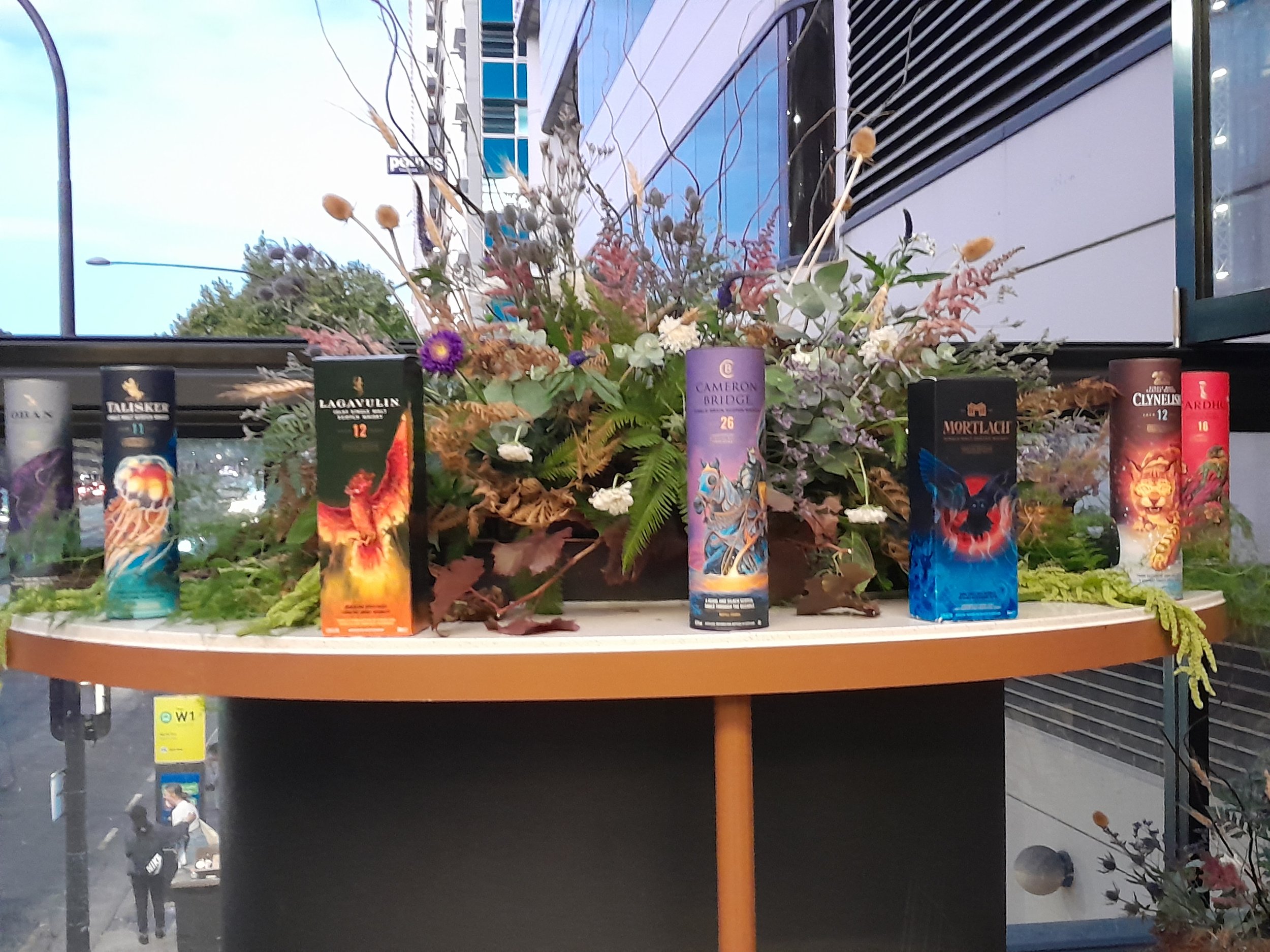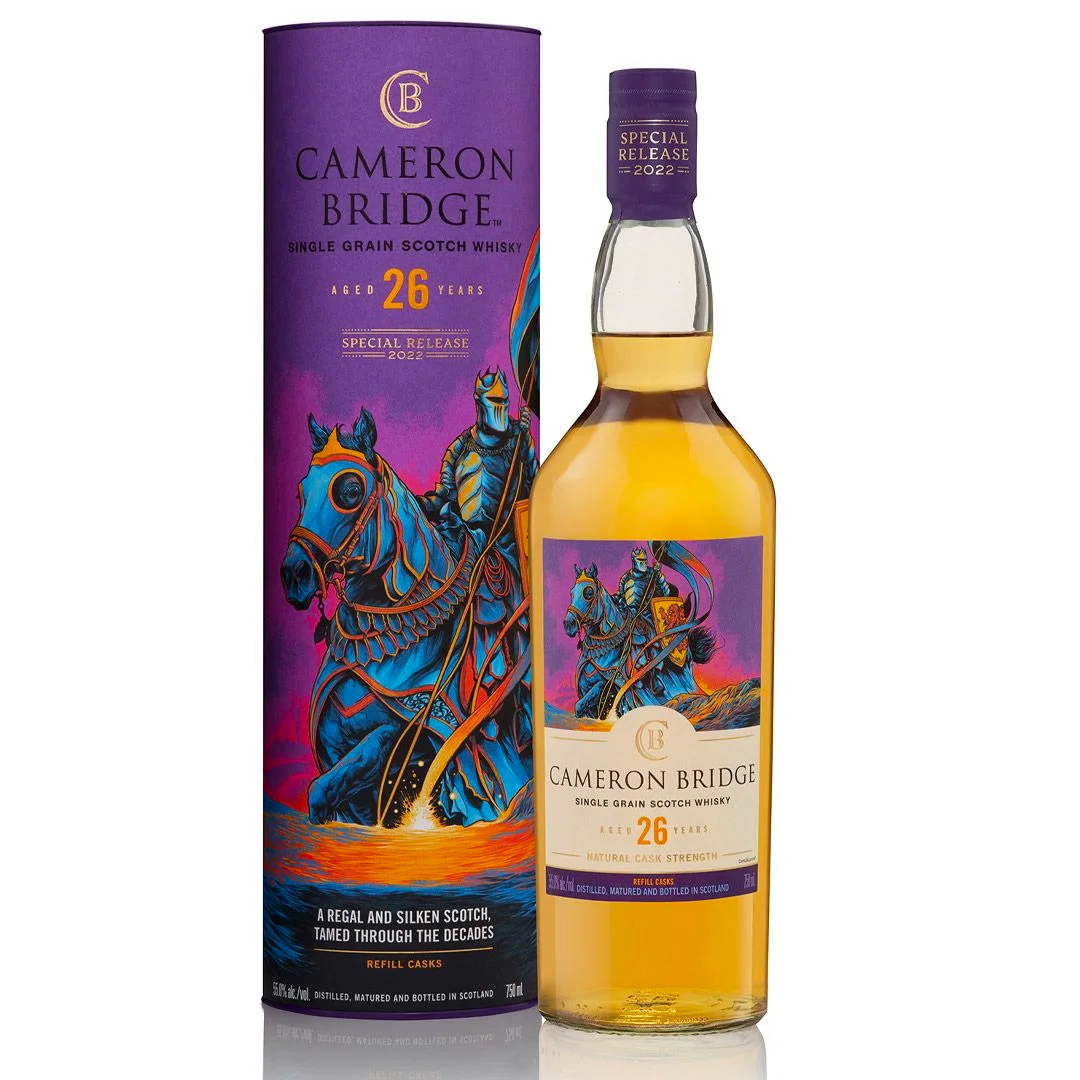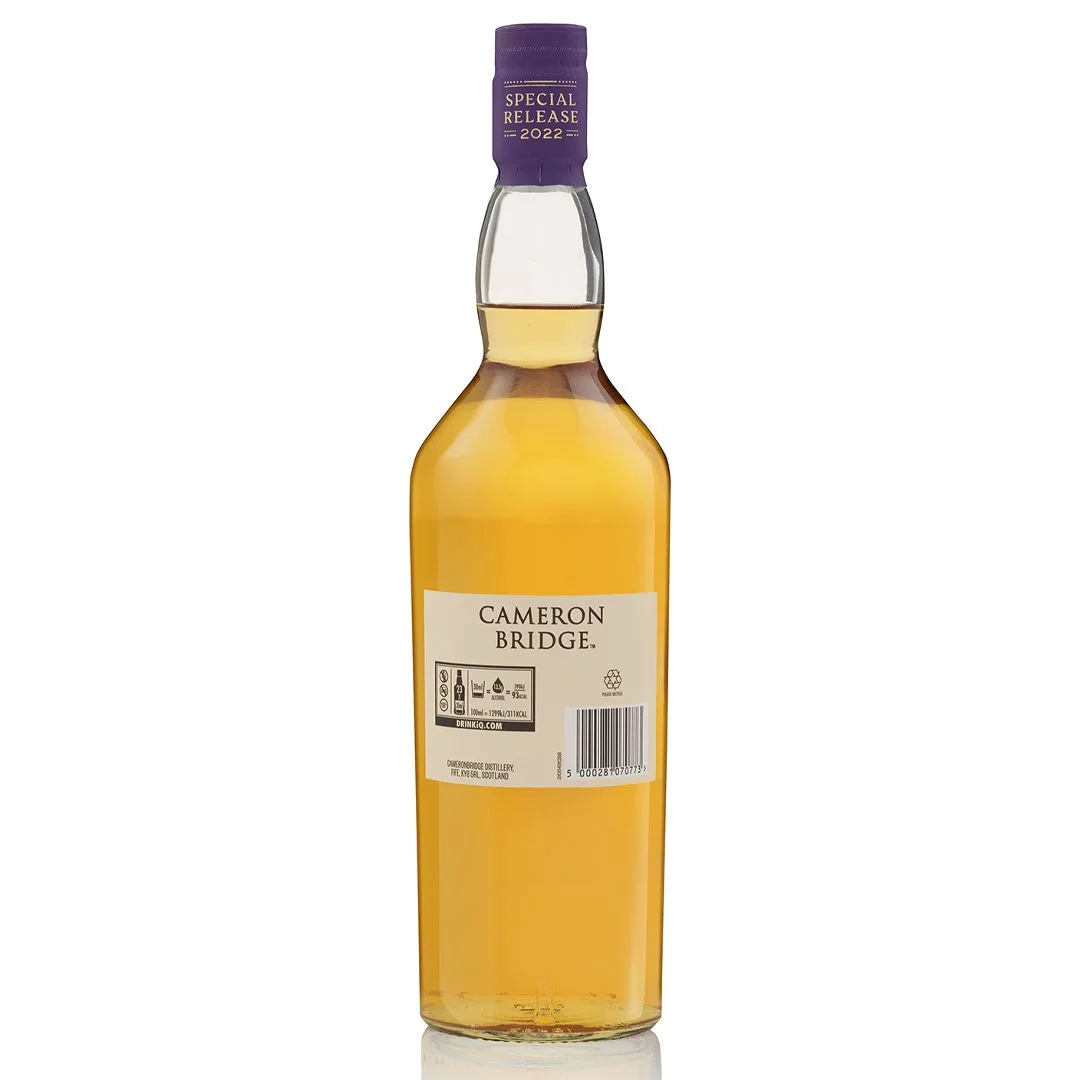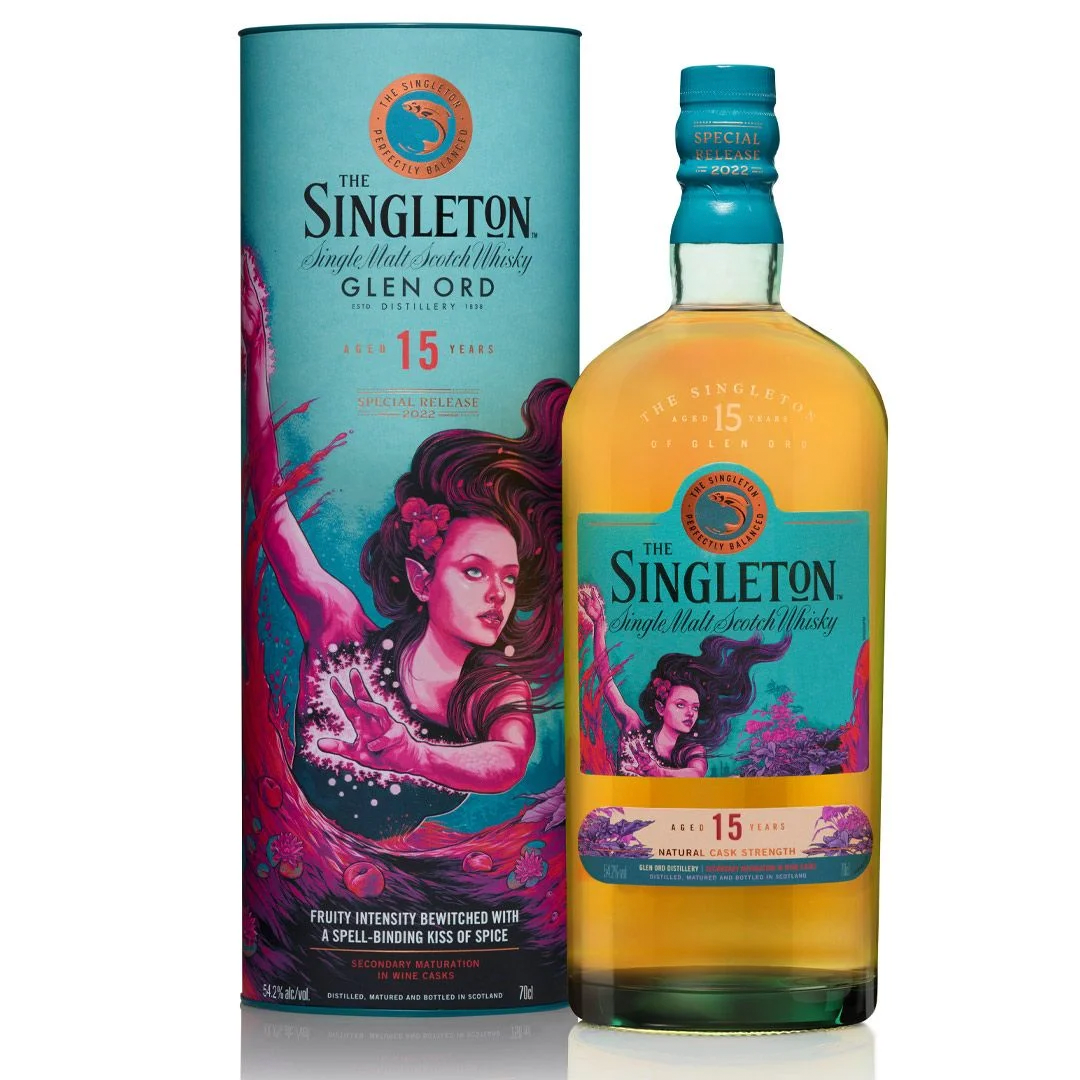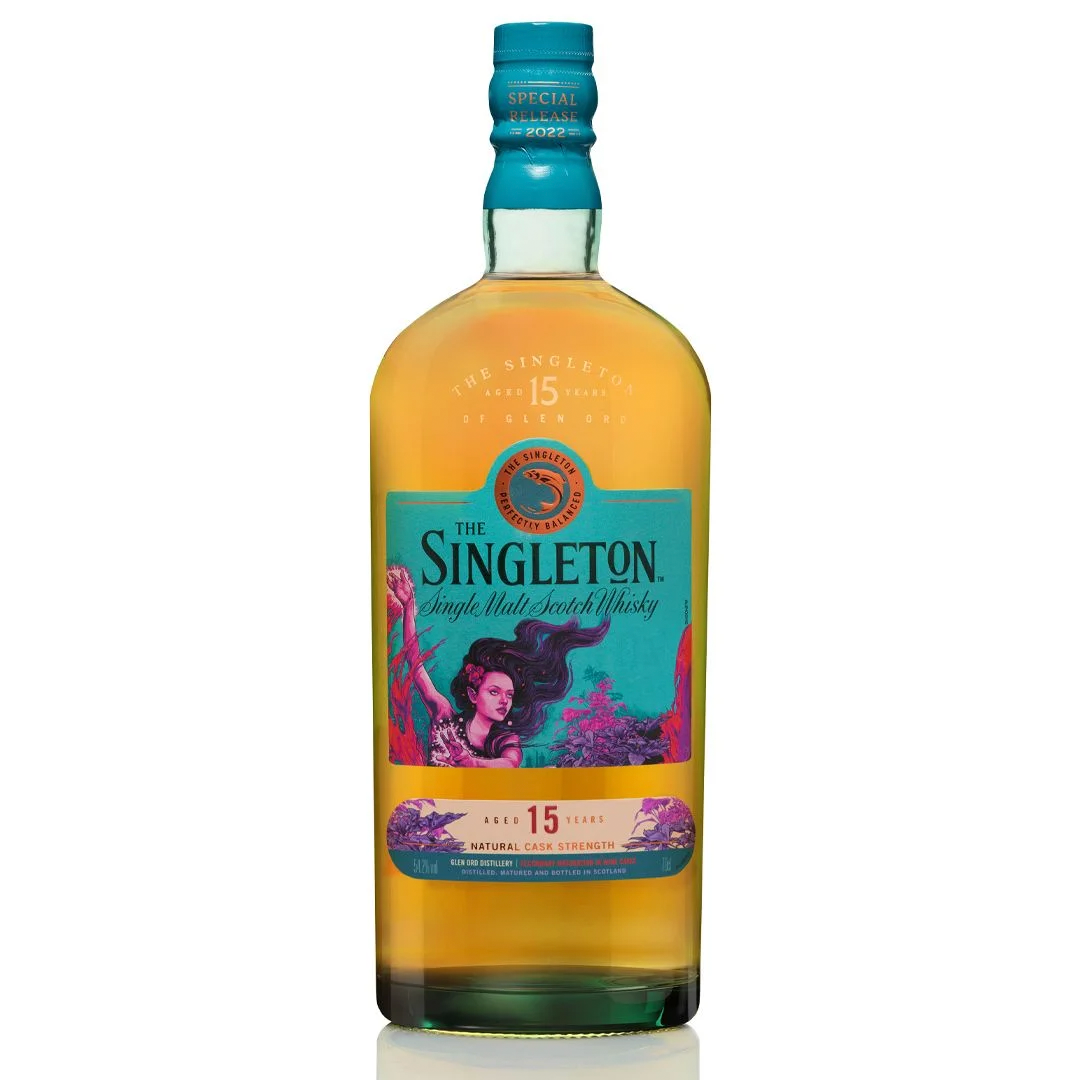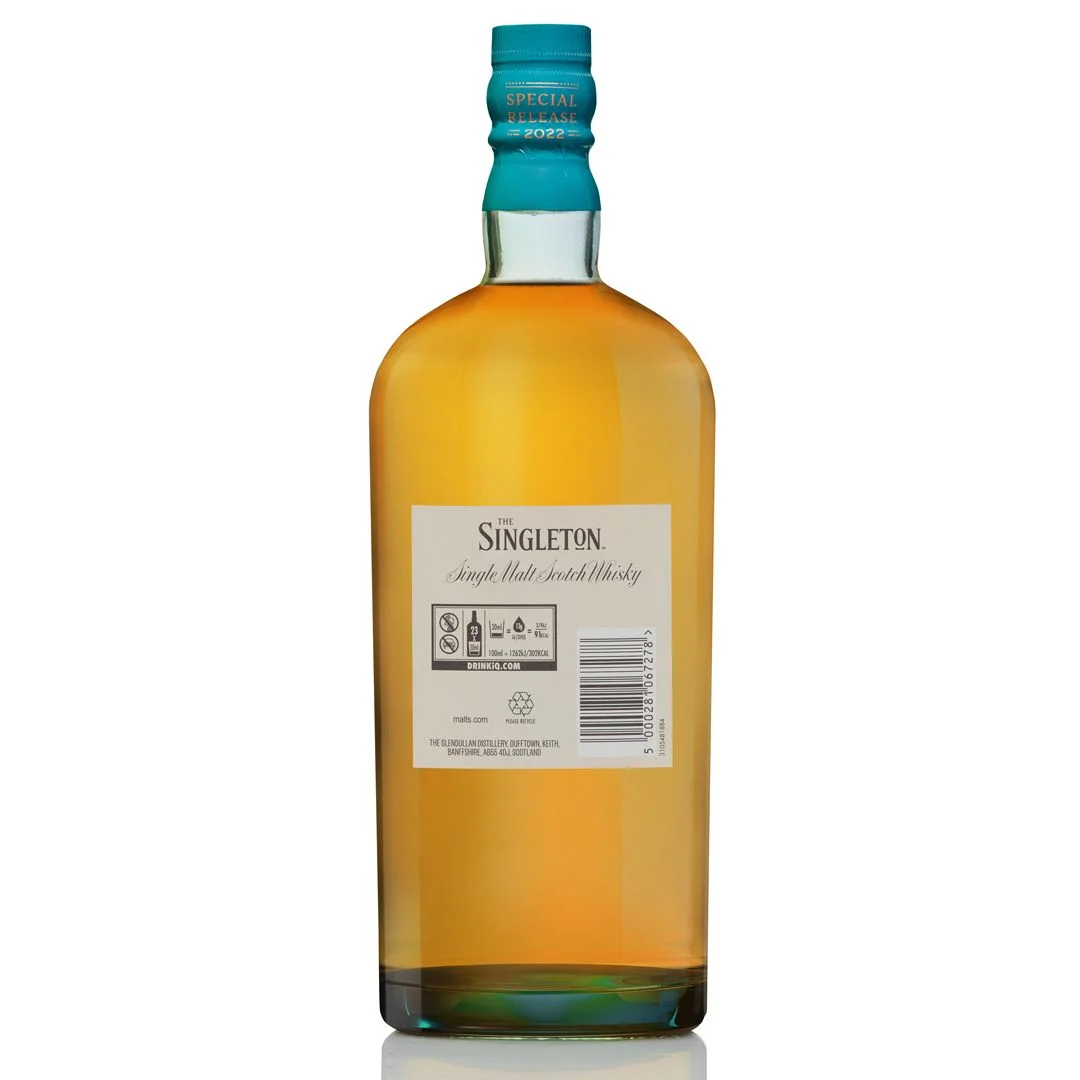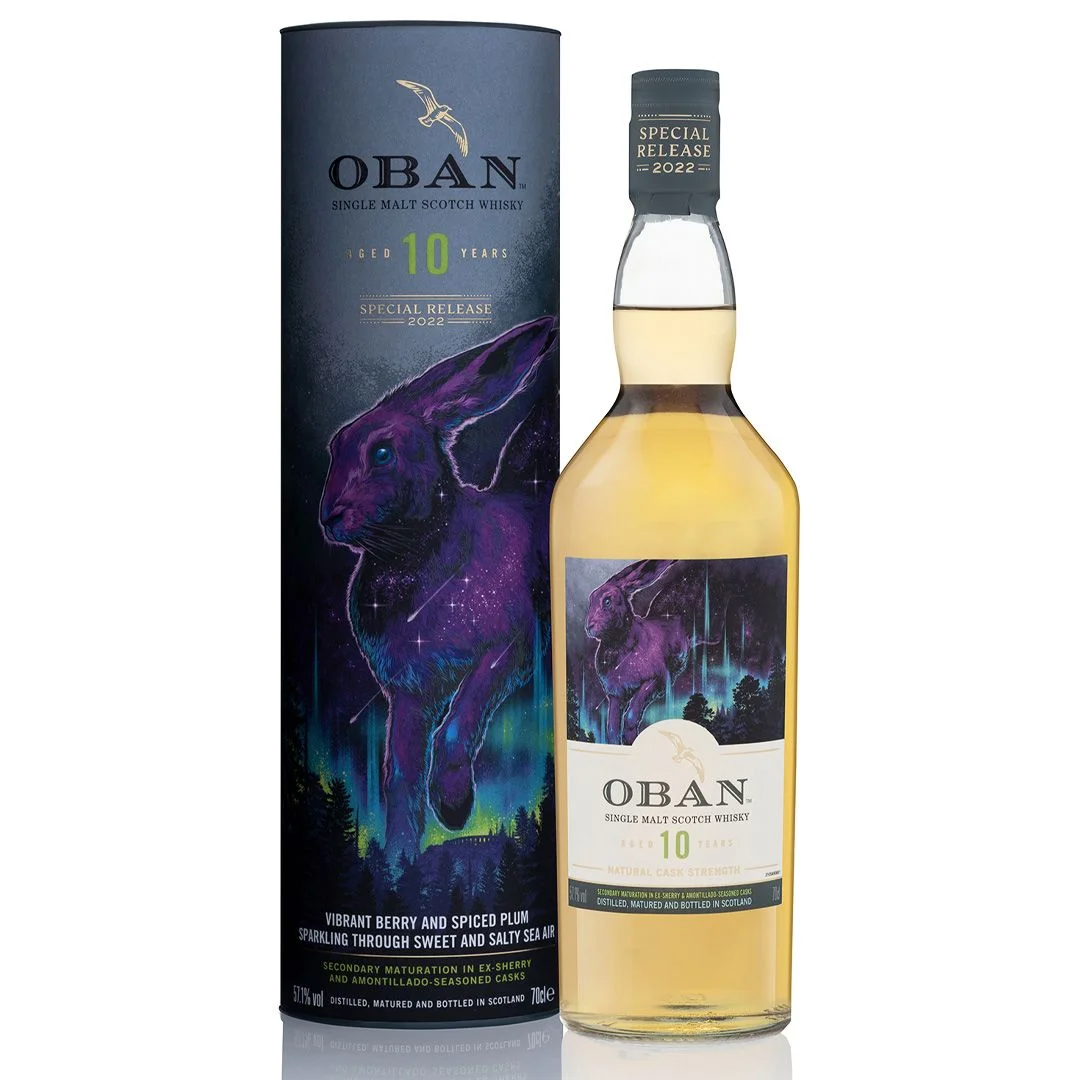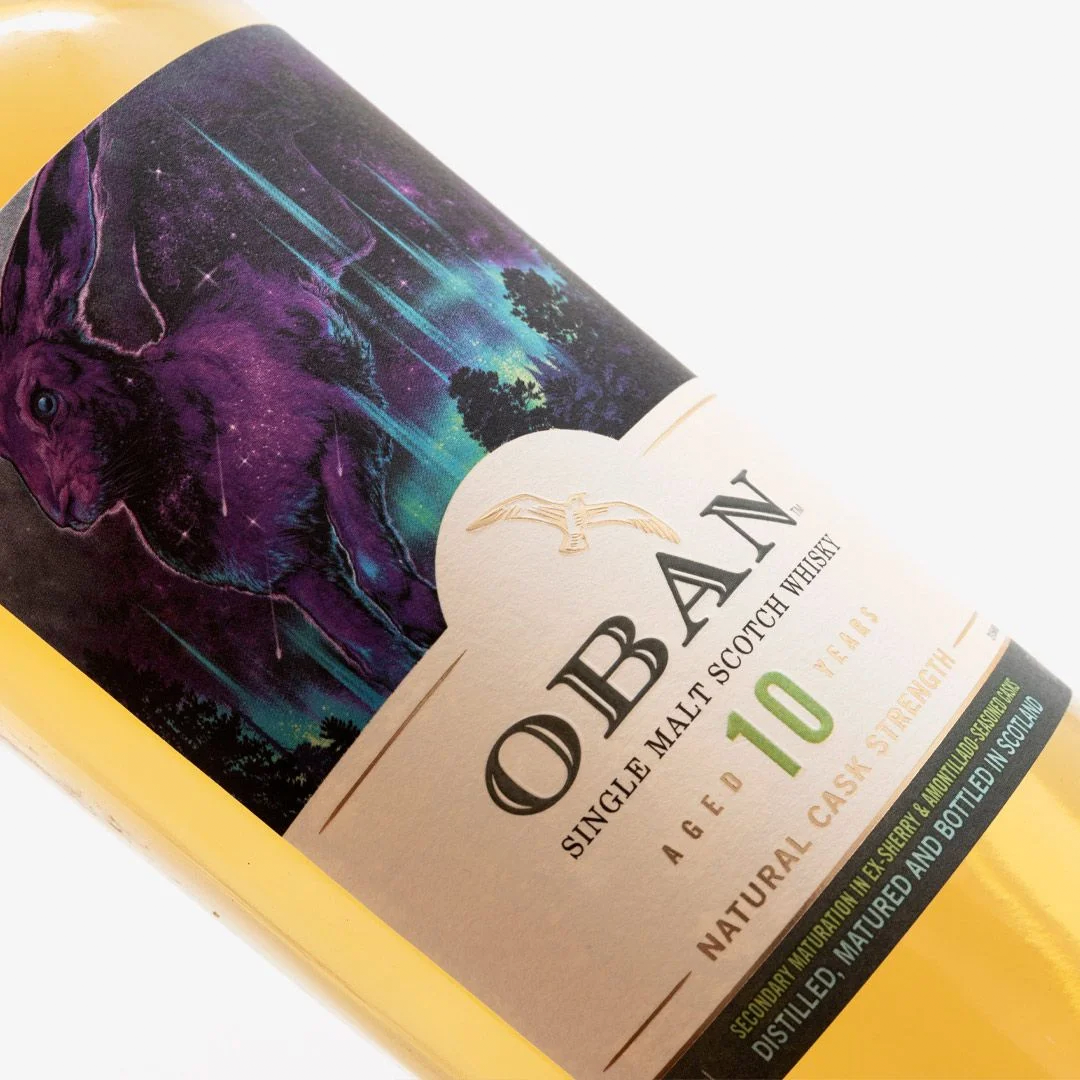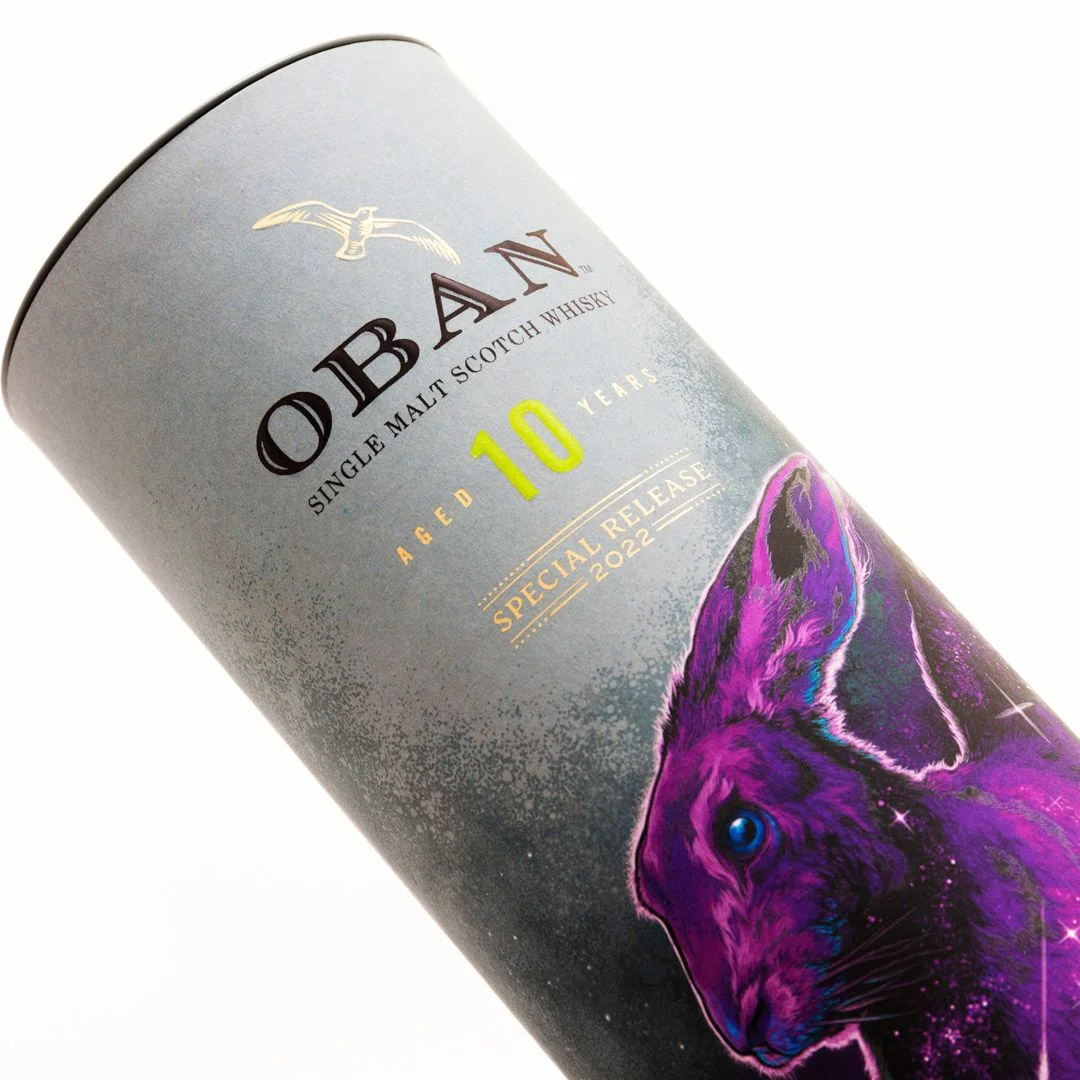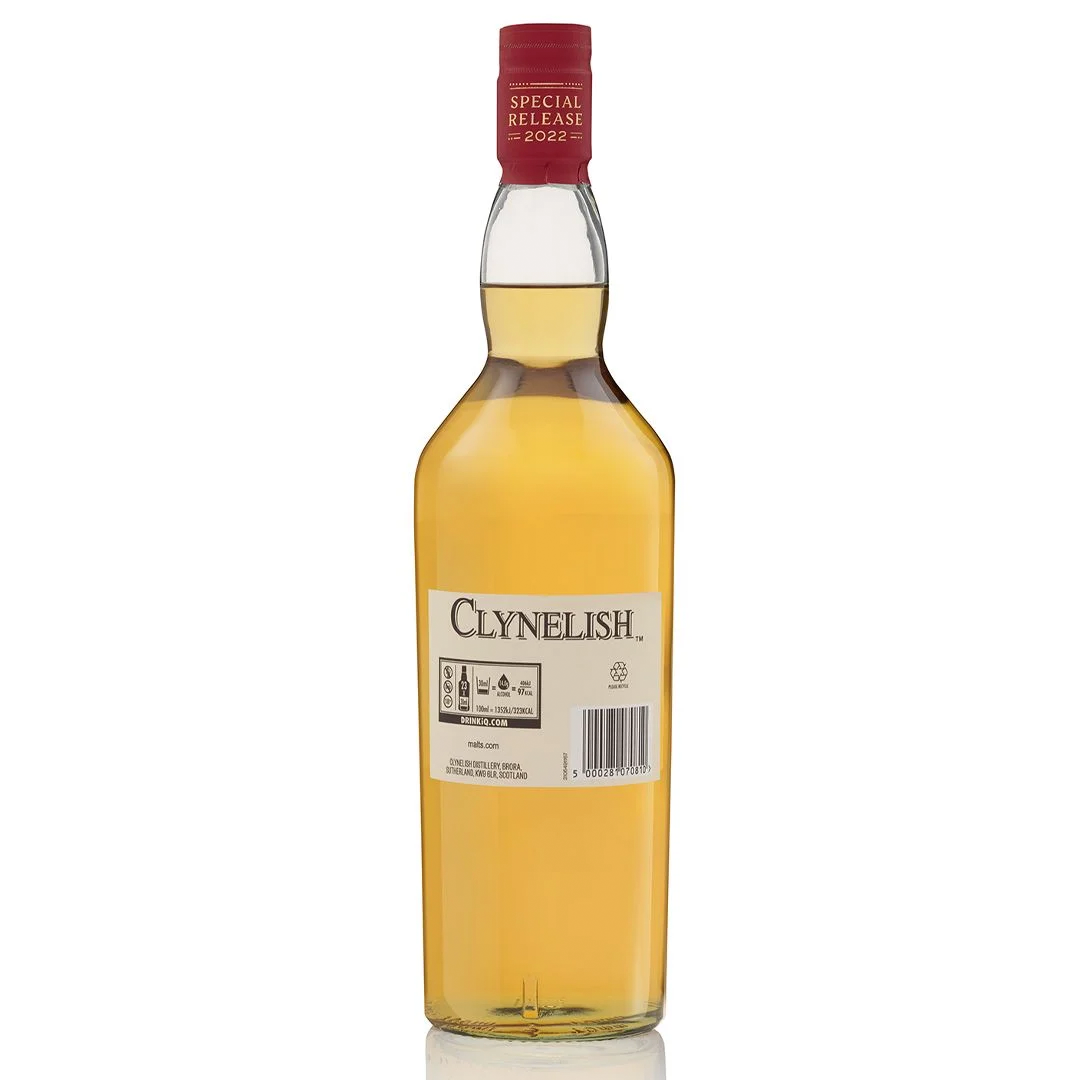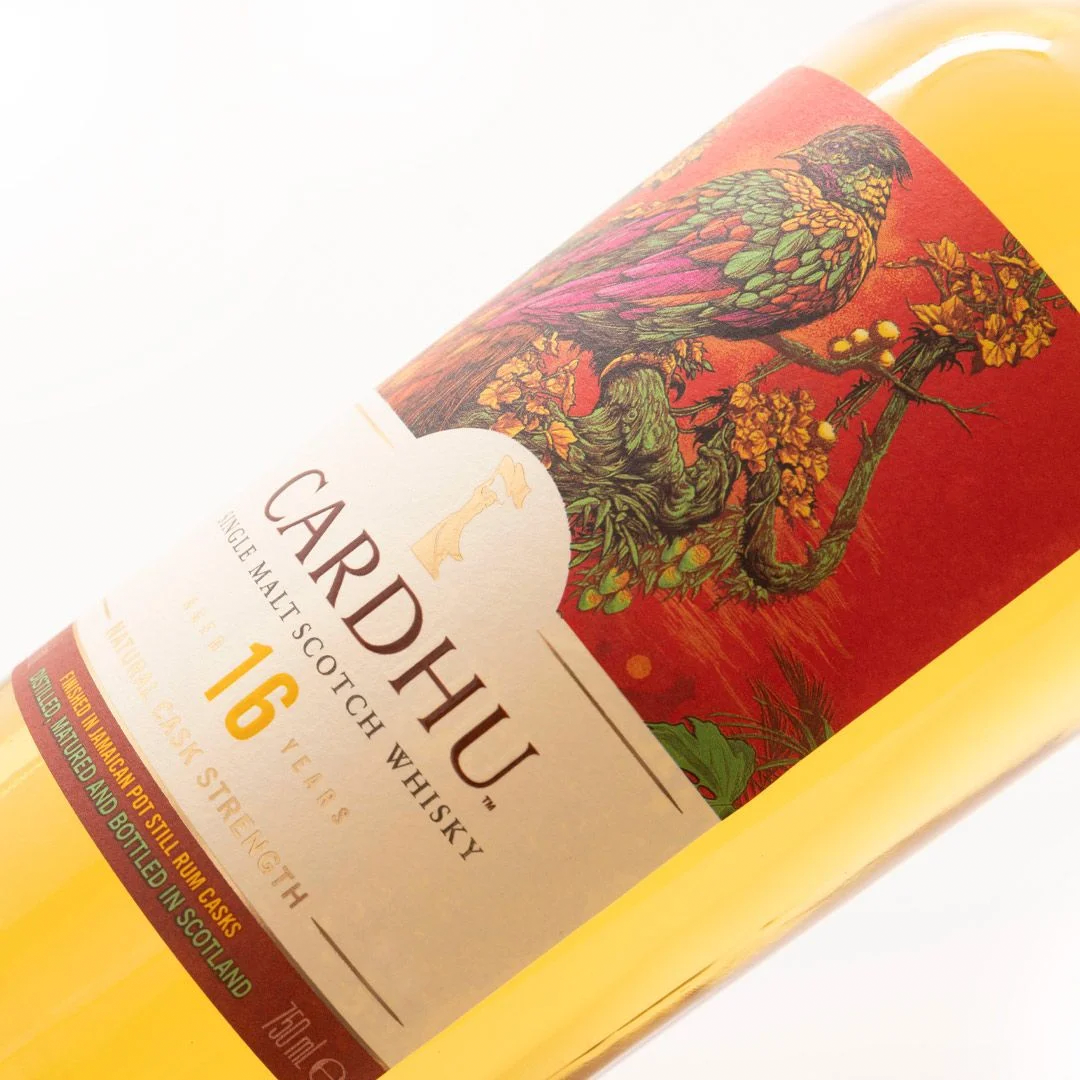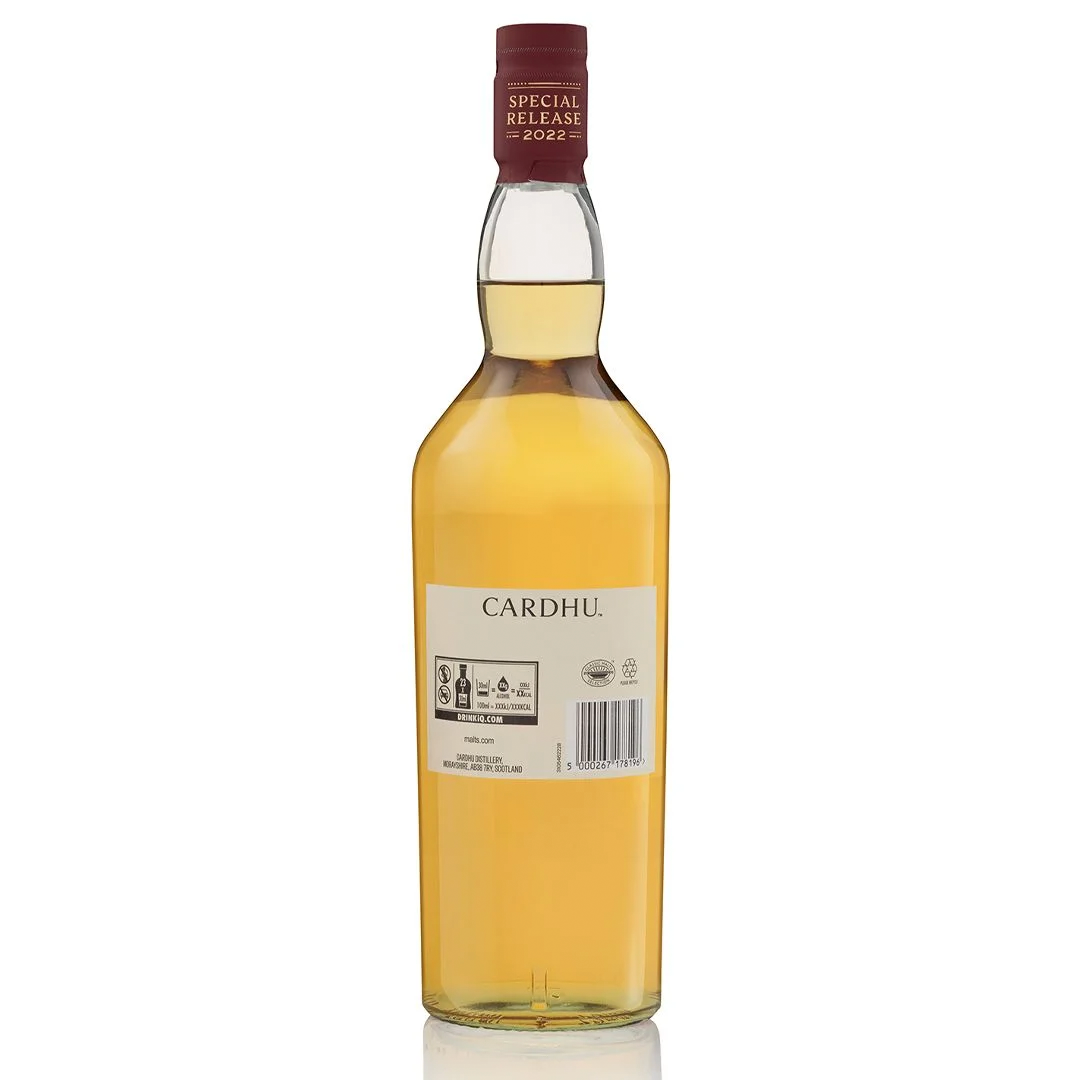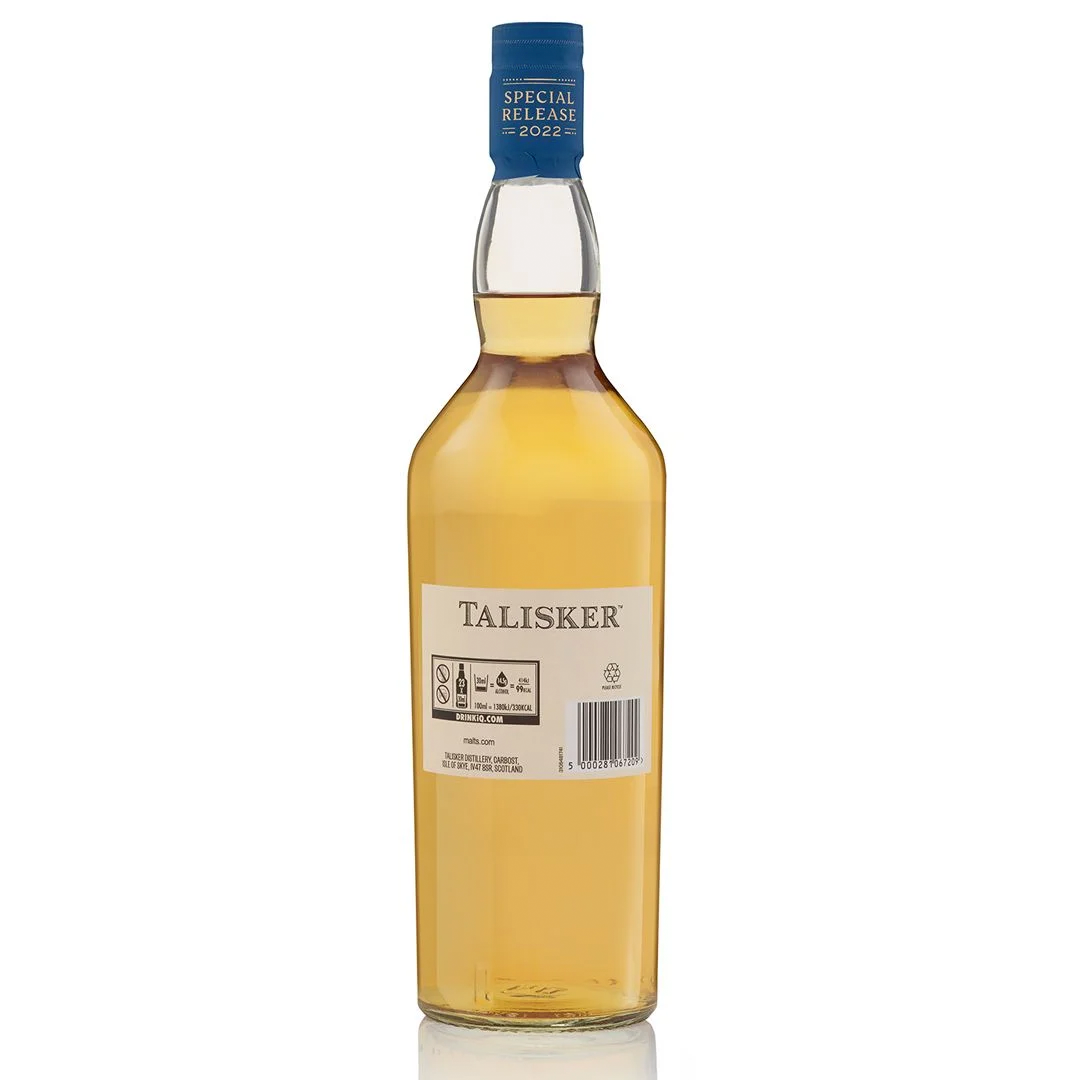Diageo Special Releases 2022
2022 Annual Special Releases in review | Various ABV
Is the Diageo whisky empire in decline?
I was recently invited to a local industry/press-only showcase of the 2022 Diageo Special Releases range. It was a lovely affair in that the hosts were good people, happy to be holding the event in a nice space with some tasty food, a pleasant ambience and a room full of knowledgeable whisky enthusiasts. There were, however, just a couple of hitches.
I’d like to be very clear - I’m grateful to have been invited along to taste the whiskies, and those running the event exuded the very definition of fine hospitality. The issues which I express in the following paragraphs are not levelled at those workers, but rather the company that facilitated said issues. Speaking of which, I’ll be fairly forthright; the evening was dominantly not about the whisky.
This became apparent from early on in the proceedings. There were slideshows discussing the whiskies with their tasting notes and some quick-grab production details such as ages, cask types, ABVs, tasting notes etc, but there was a much greater focus on the aesthetics of the bottles, the designs flowing on from last year’s similarly fantastical Renaissance-Fair-like gildings and the romanticism of the Diageo distilleries. I had foolishly hoped the tasting might have been an earnest attempt to bring experienced industry people to seriously taste some worthy whiskies, but in retrospect that notion was obvious folly.
There was also a pretty strong undercurrent of marketing throughout. Not in the educational sense of trying to help us, the bar and retail staff to market to our customers - which I could partially forgive - but rather for the Diageo representatives to market the whiskies to us. For example, order forms were handed out at the beginning of the tasting with “helpful spaces for our tasting notes” feigning to draw some thin veil of modesty over the exercise. Coyness was attempted with casual references to other states selling out allocations of certain whiskies in short time periods, clearly seeking some invocation of FOMO on sales.
So they wanted to make a sales pitch? All right, there are no free lunches (or dinners in this case) and clearly some money had been spent on the tasting, so fair enough. Making the sale is all about execution though, and that’s where the presentation did rub me the wrong way a bit. It was basically a cookie-cutter design with a lot of obviously scripted information quoted, many authoritative tasting notes handed down from above and more whimsical prose embellishing the background of each distillery as the drams were handed out.
No one element of this was intrinsically faulty, but the collective did feel somewhat patronising. It didn’t help that there was little to no time allowed for questions from the audience and that there was a minimal amount of time to nose and taste the whiskies without someone talking at us. Indeed, I eventually started to multitask between listening to presentations and writing notes because of the sharp pace; waiters were coming to clear the tables of glasses which, in my case, still had whisky in them to make way for the next round.
That brings me to another irksome component of the tasting; no more than two whiskies were ever given to us on the table at the same time, thus making it impossible to properly go back and forth between samples to compare them. I tend to spend more time on the nose than the palate, dissecting the whiskies before tainting my mouth and consequently nose with the liquid and its vapours. By only presenting two at a time, the first two whiskies had to be drunk before the third and fourth could be nosed, then the same going forward for 5&6 and 7&8. This problem was exacerbated by there being quite a lot of heavily aromatic food on the tables from the beginning of the tasting; more attention had to be paid to retronasal rather than orthonasal olfaction, which is not generally my preference.
The last gripe I’ll mention specifically was in the information given for the Cardhu; this edition’s bottling was finished in Jamaican pot still rum casks, and while the distillery isn’t named, on the balance of probabilities it’s very likely to be Appleton Estate. Appleton is the largest of the Jamaican distilleries by production, and it’s one of only two distilleries on the island owned by Campari, a group with whom Diageo almost certainly have cask trading/buying agreements already. Anyway; the point was made that the whisky was imbued with extra fruity qualities as a result of Jamaican rum distilleries using dunder in their fermentation process to produce more esters by encouraging secondary bacterial fermentation.
This is the case in many instances, but Appleton Estate are one of the few exceptions I know of; last I checked, they use neither dunder nor muck pits in their fermentations. This wasn’t a big deal, and I suppose it was nice to know the presenter at least had enough of an interest in the rum category to be familiar with the term, but it was a little disheartening to have the inaccuracy presented to a group of pretty knowledgeable people. Especially a group with a fairly high likelihood of then repeating that misinformation to customers in retail/bar sales pitches; this is how rumours and misinformation spread.
I’ll stop complaining about the specifics of the presentation now, but what I mean to say is that we weren’t really encouraged to think independently about the whiskies in our glasses, and even less so to form our own conclusions. On that note, let’s proceed to the reviews.
Note:
I would like to make it very clear - these notes are only my first impressions. Due to the circumstances outlined above, it was pretty difficult to get a good grasp of the finer details in each of these bottlings. Please take everything below as broad-brush descriptions.
Review 1/8
Cameronbridge 26yo, 56.2% ABV
£275 in stock at malts.com and elsewhere (AUD$600)
Score: 4/10
Some promise.
TL;DR
Tired casks, uninteresting grain distillate
Nose
Subdued for the age, not as much going on as I’d hoped. Doesn’t nose like it’s in the mid-twenties either; some tired casks? Slight sweet grainy quality with moderate florals and very mild vanilla; that’s about it.
Palate
Very tired casks indeed; dominantly third-fills? Moderate grainy sweetness, some more florals, a touch of cask spice but nothing like the age should confer. Distinct absence of significant fruits given the age.
The Dregs
A just-fine grain whisky which could have done with some more cask influence, distillate flavour or both. It’s worth noting there are cask extract components (it’s hypothesised that hydrolysable tannin products like gallotannins and ellagitannins play a significant role in this) which regulate the oxidation of whisky, including the oxidation of ethanol to acetic acid. The increase in acetic acid then promotes an increase in spontaneous esterification with ethanol (and other alcohols with diff to a lesser extent) to form ethyl acetate which in turn helps to contribute to organoleptically perceived increases in ester content. Too little cask extract thus reduces the capacity to develop perceived fruitiness over time.
Admittedly grain whiskies aren’t generally my thing, but I’ve had a few which have blown this out of the water. There are still a handful of grain whisky Cadenhead’s Small Batch CS bottles which are this age or older at half the price or less on shelf. I would strongly suggest any number of those as an alternative.
Score: 4/10
Review 2/8
The Singleton of Glen Ord 15yo, 54.2% ABV
£275 in stock at malts.com and elsewhere (AUD$200)
Score: 5/10
Average. In a good way.
TL;DR
A nice enough bottle spoiled by wine casks
Nose
American oak driven but with some slightly confectionary red fruits perhaps, some nice malt, moderate sweet white florals, vanilla/baking spice, touch of orchard fruits.
Palate
More wine; mild vinous tartness and definite/obstructive mushroomy rancio plus more slightly annoying confectionary berries. It’s not totally overdone though, some cooked apple and a touch of malt plus baking spice/vanilla round things out.
The Dregs
For others this might be a bit better bottling, but for me it’s pretty well in the “meh” camp. There is at least some decent volume of flavour, unlike the Cameronbridge, and I’m sure the wine/fortified cask lovers will get something out of the extra casking. It gets a better mark than the Cameronbridge, partially because it’s less overpriced comparatively, but it really only just scrapes in the score.
Score: 5/10
Review 3/8
Oban 10yo, 57.1% ABV
£104 in stock at malts.com and elsewhere (AUD$170)
Score: 5/10
Average. In a good way.
TL;DR
Some promising distillate with a little nutty sherry
Nose
Worty malt, good bourbon casks with moderate caramel and vanilla plus soft coconut and milk lolly-geared lactones, orchard stone fruits and a bit of marzipan nuttiness.
Palate
Way more sherry driven, a bit vinous plus some nutty/mushroom rancio, although less than the Singleton, thank goodness. Some nice crunchy white fruits running underneath plus hints of melon and peach, soft cask spices with lactones and still a wee twinge of new-make.
The Dregs
It’s in the better half of bottles in this line up. Just. It’s taken on some oak/sherry extractive flavours but is still a bit young to have had sufficient interaction, so it does still play a touch young. The rancio is more than I personally enjoy but I could see the appeal for those that are bigger fans of Amontillado.
Score: 5/10
Review 4/8
Mortlach, NAS, 58.7% ABV
£250 in stock at malts.com and elsewhere (AUD$420)
Score: 3/10
Disappointing.
TL;DR
“If this was a human being, I’d shoot it in the face” - Chris O’Dowd, The IT Crowd
Nose
Oak driven - sweet pipe tobacco and dried red fruits, sawdust and woodshop (E-2-nonenal) and again a slightly confectionary tone plus a smidge of sulphur, though perhaps that’s just the distillate trying to be heard.
Palate
Almost Australian style, and I do mean that pejoratively. Tannic, overly cask-driven, some very mild meatiness and malt underneath, touch of solvent, a bare hint of tropical fruit such as pineapple and grapefruit, but in the grand scheme it’s pretty light going so far as distillate. Tannins become astringent and the whole composition is just harsh.
The Dregs
Not a fan, and even for big cask lovers I struggle to see much appeal in this besides the fleeting shimmers of fruit and malt from the distillate. If this were a person, it would be the downtrodden office assistant with a masters degree fetching coffees for the CEO and hand-washing their undergarments. So much wasted potential.
Oh, and the price, for a NAS? Get in the sea.
Score: 3/10
Review 5/8
Clynelish 12yo, 58.5% ABV
£175 in stock at malts.com and elsewhere (AUD$350)
Score: 4/10
Some promise.
TL;DR
Disappointing mishandling of great distillate
Nose
Oh no. Cask sulphur. Stewed dark fruits and oak spices, glazed orange peel, a little bit of malt and mild caramel.
Palate
Damn it, serious sulphur. Vulcanised rubber, vegetable compost, struck match, the lot. More stewed fruits and a bit of annoying sweetness with raisins, orange oil and oak spice (presumably the PX) with a touch of tropical fruit, namely pineapple and lychee. Moderately tannic astringency on the finish too.
The Dregs
I’d like to reiterate in particular for this review that this tasting was not conducive to writing solid notes, nor have I had the chance to revisit any of these. Now, with that said…
This bottling has made me angrier than the rest of the offerings, their prices, their marketing, presentation and holistic shenanigans combined. This wonderful, world-renowned distillate prized by so very many passionate whisky fans (yours truly firmly included) has been sullied, tarnished and otherwise spoiled by some dumb and reckless cask selection.
My anger is augmented by the fact Diageo are the last organisation on the planet that can claim ignorance or happenstance as a defence. They have more money, more resources and better connections than practically anyone else to source quality casks for their A-list distillates. They have access to more lab testing than most groups would know what to do with, and their sensory panels are famously extensive at multiple production stages, not least of all for the expertise of their master blender for scotch whisky and the lead on these DSR bottlings, Heriot-Watt alumnus Dr. Craig Wilson.
This. Should. Not. Have. Happened.
I absolutely don’t blame Dr. Wilson (I have great respect and admiration for anyone that has attained such academic achievement in the field) nor any other single production worker involved in this bottling given what was most likely a huge amount of pressure and direction coming down from the corporate overlords.
The fact this bottle exists is solely a testimony to how little Diageo, as a corporate entity, must think of the whisky drinking world at large. I want to give this a lower score, but given my sensitivity to cask sulphur and the self-awareness I possess about my currently agitated state, that wouldn’t be fair. Still, I implore you as fellow whisky enthusiasts - please do not buy this bottle without first tasting it. Tasting bottles yourself before a purchase is generally advisable, but in this instance, it is absolutely mandatory.
Score: 4/10
Review 6/8
Cardhu 16yo, 58.0% ABV
£160 in stock at malts.com and elsewhere (AUD$300)
Score: 5/10
Average. In a good way.
TL;DR
Fine, but lacking much character
Nose
Touch of butter menthol, perhaps some trace solvent, fairly mild and clean with some solid malt, a hint of olive oil , banana, mild pineapple and soft spice.
Palate
Much the same; bit more prominent fruit with notes of residual rum banana, pineapple and ethyl acetate, some cask spices, more malt and olive oil. It’s a little bit boozy, though the ABV is pretty high for something without much distillate oomph or significant sweetness to balance it out.
The Dregs
This is another whisky which makes it into the top half of the line-up, but it’s still well and truly below the top quarter to come. At least it’s clean and without any significant faults. There’s still no way I’d be caught buying a bottle at the price though.
Score: 5/10
Review 7/8
Talisker 11yo, 55.1% ABV
£110 in stock at malts.com and elsewhere (AUD$190)
Score: 7/10
Very good indeed.
TL;DR
The only pleasant surprise
Nose
Oh, nice. Ashy, wood smoke and BBQ chargrill, some cooked meats (courtesy of the worm tubs probably), peppery terpenes, lemon oil, a touch of good malt and a distinct lack of new-make or annoying wine casks.
Palate
A light touch of woody sweetness, but otherwise pretty much the same. Some really good ash and char, mild butteriness from the oak, carbonised meats, lemon-pepper rub, honeyed malt and wood smoke coming back through the finish.
The Dregs
Thankfully I don’t think I’d pick out the use of wine casks in this blind. The price on this release, given the age and quality, is less insulting than any of the other bottlings in the lineup. This is, surprisingly, the second closest I’d come to buying a bottle from this collection. It’s also the only bottle that doesn’t lose a point for pricing in my books - just barely.
Score: 7/10
Review 8/8
Lagavulin 12yo, 57.3% ABV
£135 in stock at malts.com and elsewhere (AUD$220)
Score: 7/10
Very good indeed.
TL;DR
Classic and expected
Nose
I’ll be honest, my notes for this basically just admitted defeat; yeah, it’s good. They read as below;
Typical Lagavulin 12 profile, virgin oak not overdone here.
Palate
Good Lagavulin, heavy-hitting, huge phenolics, huge lemon, big malt, usual stuff. Holistically pretty much in keeping with other vintages
The Dregs
Admittedly I can’t pass proper judgement on this without trying it up against the last few years vintages for comparison. It should also be noted it was the last whisky in a string of seven other cask strength bottlings; even taking tiny sips and not finishing the fairly small pours in each glass, palate fatigue would have been a factor - especially after the surprisingly good and punchy Talisker. In any case, this was the best bottle of the night for me, and I’m slightly relieved to say I don’t think they’ve let Lagavulin slip. Yet.
The more Diageo sees these ridiculous presentations, prices, cask programs and other silliness continue to translate into sales, the more we’ll see them sacrifice the quality of the whisky in the name of expediency, cost saving and gimmick. This bottle actually hasn’t gone up significantly in price compared to last year’s, but it’s still pushing the envelope a bit, and I’m fairly sure I’d prefer last year’s in a blind line-up. Be smart with your purchases. Our reactions set the boundaries for how companies like Diageo treat us.
Set your boundaries wisely.
Score: 7/10
Tried these? Share your thoughts in the comments below. TK
-
Dramface is free.
Its fierce independence and community-focused content is funded by that same community. We don’t do ads, sponsorships or paid-for content. If you like what we do you can support us by becoming a Dramface member for the price of a magazine.
However, if you’ve found a particular article valuable, you also have the option to make a direct donation to the writer, here: buy me a dram - you’d make their day. Thank you.
For more on Dramface and our funding read our about page here.
Other opinions on these:
Whiskybase Singleton of Glen Ord
Whiskybase Mortlach Clynelish 12yo
Got a link to a reliable review? Tell us.





